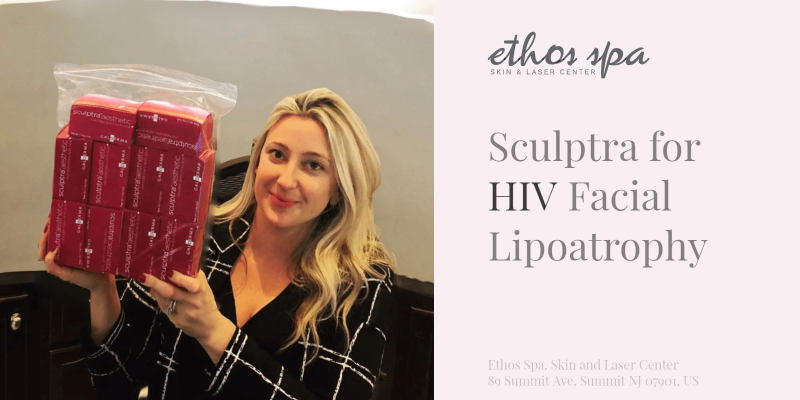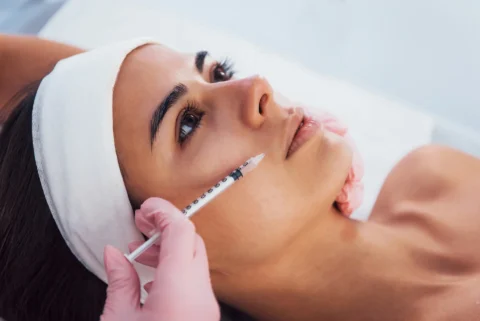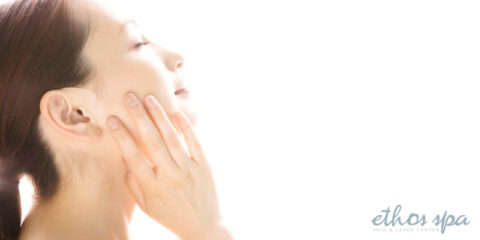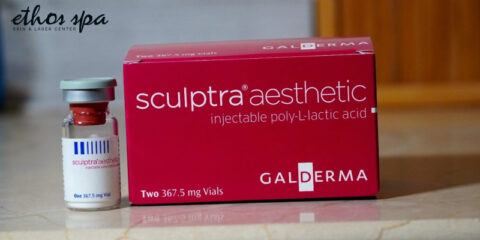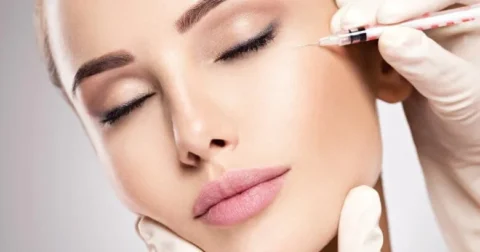HIV-positive patients often experience facial lipoatrophy or loss of fat in the face, a condition which many patients describe to be ‘highly stigmatizing’. In some cases, facial lipoatrophy can lead to occupational issues, depression, and social isolation. Fortunately, dermatologists can use injectable fillers like Sculptra for treating HIV-positive patients who have facial volume loss.
So how exactly does Sculptra help HIV patients? Sculptra is an FDA-approved treatment for HIV-related lipoatrophy. Sculptra’s formula contains poly-L-lactic acid, which can trigger a foreign body response and stimulate fibroblast activity at the treatment site. When fibroblasts are active, they incite collagen fiber growth which helps with skin thickening.
How It Works: Sculptra for HIV Facial Lipoatrophy
HIV-positive patients undergo a unique condition called lipodystrophy syndrome, which is defined by lipohypertrophy (fat accumulation), lipoatrophy (fat loss), or a combination of both. The cause of lipodystrophy syndrome is still unknown. Doctors speculate that lipodystrophy may occur due to the drugs used for HIV treatment, the HIV infection itself, or other factors.
While no one knows why lipodystrophy happens, a doctor or a dermatologist can still administer treatment to address lipoatrophy, or the loss of volume in the face, arms, buttocks, and legs. Products like Sculptra can improve the appearance of the skin and boost the growth of soft tissues.
Sculptra is one of the two FDA-approved dermal fillers for treating HIV-associated facial lipoatrophy. It is an injectable form of poly-L-lactic acid, a biodegradable and biocompatible synthetic polymer used in facial implants, bone screws, and dissolvable stitches. When Sculptra is injected in HIV-patients, it serves as a collagen biostimulator.
As the Sculptra bioparticles are absorbed in the body over time, it triggers the immune system to respond and create fibroblasts to surround the foreign filler particles. The fibroblast activity encourages the body to produce more collagen at the treatment site, resulting in skin thickening and firming.
What Is The Sculptra Treatment Like For HIV Patients?
Sculptra is a dermal filler usually injected into the skin to diminish facial wrinkles and folds. For HIV patients, Sculptra can restore fullness to the face in a few months after treatment.
Your Sculptra treatment will begin upon an initial consultation with your trained doctor or dermatologist, where you will be asked to provide your complete medical history and indicate any medical conditions or allergies.
Depending on the goal you want to achieve with the facial injectable, your physician will work with you to determine how many treatment sessions are needed for the best results. On average, a Sculptra regimen for HIV-patients will consist of three injections spaced out between three to four months.
The day of your initial treatment may look like this:
- Your doctor will map out injection sites on your skin and cleanse the treatment areas.
- Afterwards, the doctor will apply a topical anesthetic to ease any discomfort.
- Using several small injections, the doctor will then inject your skin with the Sculptra filler.
- After the treatment, your doctor may give instructions on aftercare but you can resume your normal activities for the day.
- You will be asked to return for follow-up treatments to maintain facial corrections.
While Sculptra has a long history of success in treating lipodystrophy syndrome, you can expect common side effects to occur in the treatment area:
- Itching
- Pain
- Redness
- Tenderness
- Bleeding
- Bruising
- Swelling
- Skin discoloration
- Lumps, bumps, or nodules
To avoid any side effects, it’s best to find a qualified professional to conduct the treatment like a board-certified doctor or dermatologist. Sculptra also should not be used by people who are allergic to Sculptra ingredients, have a history of irregular scarring, or are experiencing skin infections, sores, acne, cysts, rashes, and other inflammations at the injection site.
Overall, studies have found that Sculptra can significantly improve the quality of life for HIV patients and lower measures of anxiety or depression associated with lipoatrophy.
Sculptra vs Radiesse: Which Is Better?
Aside from Sculptra, Radiesse is the only other FDA-approved cosmetic injectable which can be used for treating lipoatrophy. Unlike Sculptra, Radiesse has a non-inflammatory method for fibroblast stimulation.
Radiesse dermal fillers contain microparticles of calcium hydroxylapatite, a component found in the mineral portion of bones and teeth. Rather than triggering the body’s immune system, the filler itself acts as a scaffold for collagen production and promotes the growth of new tissues similar to its surroundings.
Both Sculptra and Radiesse products work well to restore volume in large areas affected by a substantial fat loss such as the cheeks, temples, hands, around the eyes, and between the mouth and nose. The major difference between the two cosmetic injectables is that Radiesse has fast-acting volumizing properties due to its high elasticity and viscosity.
If you’re looking for a solution that yields immediate results, Radiesse is the best choice for you. On the other hand, Sculptra is the way to go if you want more gradual results that reflect natural-looking changes.
| Pain | Treatment Areas | Results | Downtime | |
| Sculptra | Non-surgical and minimally painful injections; Pain can be further minimized by an experienced injector and topical numbing cream | Ideally used on areas which need volume, rather than reshaping like pitted acne scars and deep nasolabial folds | Results appear two weeks to a month after treatment but will last up to two years | Requires no downtime but will require more attention to aftercare |
| Radiesse | May produce higher pain levels than Sculptra as it has to be injected into much deeper layers of the skin | Works well in deep, non-superficial areas of the skin; Cannot be used on thin-skinned features such as the lips, lower eyelids, fine lines, and small wrinkles | Results appear immediately a week after treatment but can only last up to one year | Requires no downtime |
Cosmetic Fillers for HIV/AIDs Patients at Ethos Spa
Dermal fillers are tried-and-tested products to restore youth and volume to your skin. At Ethos Spa, we make sure all of our patients receive world-class care and achieve results that boost their confidence and self-esteem. If you’re experiencing HIV-associated loss of facial fat, contact Ethos Spa today for more information on our Sculptra treatments.
Learn more: Does Sculptra Work on Everyone?

